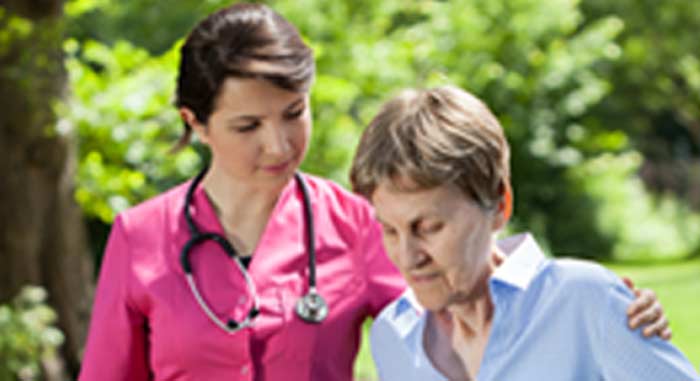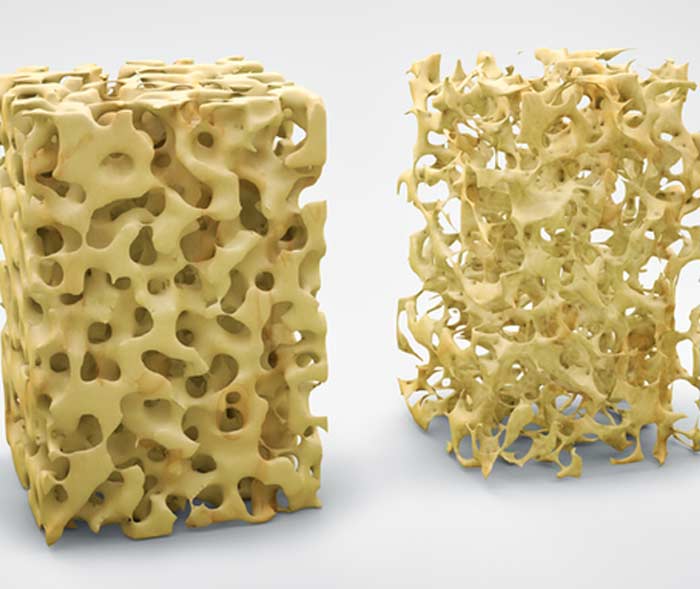
Osteoporosis is a condition in which the bones lose mass and become brittle and weak.
Bones can become so fragile that something as minor as coughing can cause a break. Osteoporosis occurs when the development of new bone does not keep up with the break down of old bone.
Although osteoporosis can affect anyone, Caucasian and Asian women past menopause are most likely to be afflicted.
Symptoms
You are unlikely to experience any symptoms during the early stages of the disease. As it progresses you may lose height and develop a stooped posture. You may also experience back pain. A fracture that occurs after a minor trauma is often the first real sign of the disease.
Risk Factors
There are a variety of things that increase your likelihood of developing osteoporosis. Women are more likely to develop it than men, and the older you are, the more likely you are to develop the condition. Genetics also factor in, with Caucasian and Asian populations more likely to develop the condition. If you have an immediate family member with the disease, you are more likely to develop it. Individuals with a smaller frame size are more likely to develop the condition.


Complications
The major complication associated with osteoporosis is bone fractures. Hip fractures, for example, can not only lead to permanent disability but also an increased risk of death in the year following the fracture. Spine fractures can occur in individuals with osteoporosis without any injury. The bones in the spine can become so brittle they crumble on their own, leading to back pain and posture difficulties.
Treatment
Osteoporosis treatment depends on how far along the condition has progressed. For individuals who have suffered a great deal of bone loss, prescription medication may be necessary. For others, lifestyle adjustments, such as working to prevent falls, avoiding alcohol, and stopping smoking, may be all that is required for some time.
Prevention
A healthy diet, rich in calcium, vitamin D, and sufficient protein can reduce your risk of developing osteoporosis, as can maintaining a healthy weight. Exercise is also an important way to reduce your risk of developing the disease. A combination of strength training, weight-bearing cardiovascular work, and balance exercises help reduce your risk of developing osteoporosis as you age.
Osteoporosis is a condition that is highly affected by genetics. You cannot do anything about your ethnicity and build, but you can control some risk factors, such as weight and activity. If you believe that you are at risk for the disease, talk to your doctor. Early intervention can help slow the progression of the disease.
